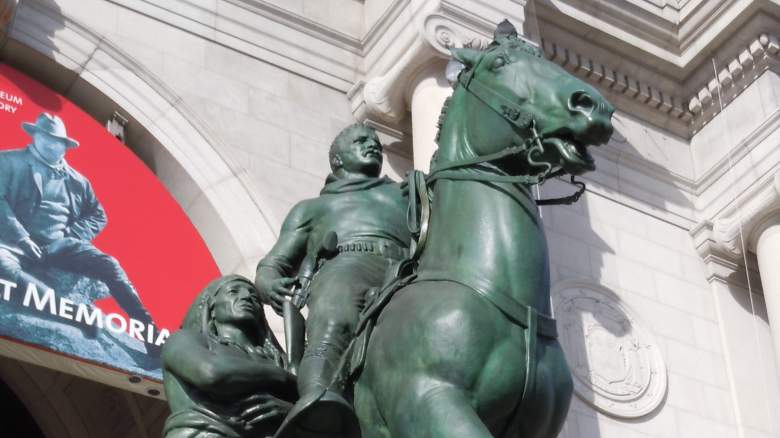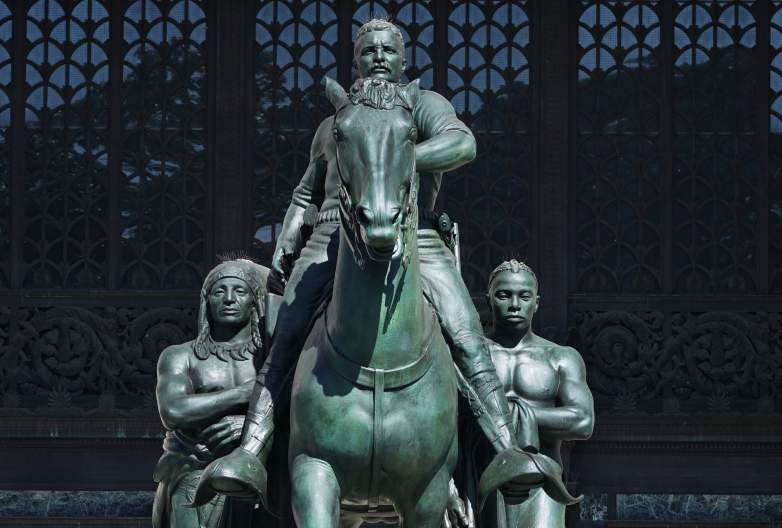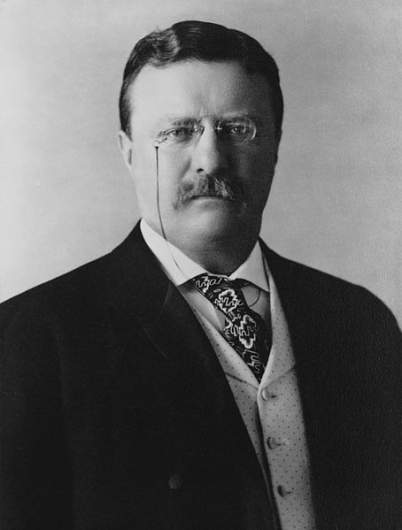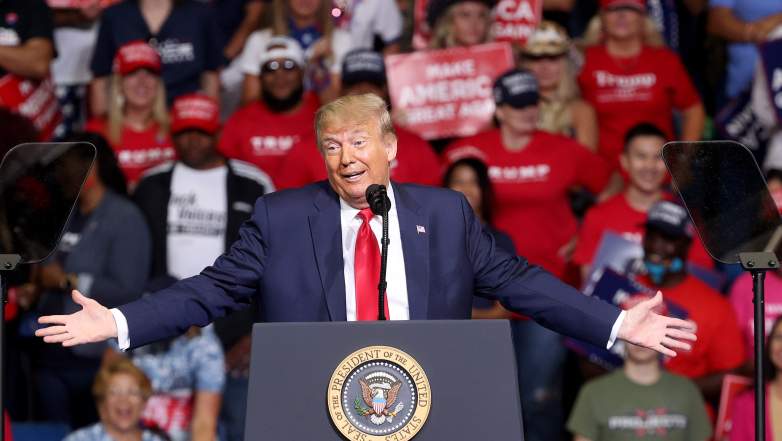
Creative Commons The Equestrian Statue of Theodore Roosevelt, outside the American Museum of Natural History in New York City.
The American Museum of Natural History announced Sunday that the iconic Equestrian Statue of Teddy Roosevelt, which has stood in front of the museum for 80 years, would be removed. The statue is considered racist by many because of how it depicts Native American and African figures.
And as debate rages nationwide over statues commemorating heroes of the Confederacy and whether the hurt they cause outweighs their historical value, the Museum of Natural History will likely send Roosevelt’s statue the way of Robert E. Lee and other controversial historical figures that have recently had their monuments removed.
Reactions to the announcement Monday ranged from gratitude to outrage, and the museum did not immediately establish a timeline for the statue’s removal.
The Statue Depicts Theodore Roosevelt With a Native American & African Man On Either Side Of Him — And Even The Architect & Sculptor Had Differing Ideas On What That Meant

Getty/Timothy A. ClaryThe Theodore Roosevelt Equestrian Statue, pictured on June 22. The statue is to be removed, the museum announced that day.
Former President Roosevelt, also a notable conservationist, is depicted astride a horse, flanked by a Native American and African figure, both of whom appear subservient to Roosevelt, the white man. The statue was dedicated in 1940. James Earle Fraser, the sculptor, said that the two men could symbolize Roosevelt’s “friendliness to all races,” according to the museum’s website.
The explanation of the architect, John Russell Pope, was significantly more patronizing and offensive to contemporary attitudes. He described the two figures flanking Roosevelt as “the American Indian and the primitive African,” and said the statue would memorialize “the fearless leadership, the explorer, benefactor and educator” — Roosevelt.

Creative CommonsTheodore Roosevelt
Roosevelt is generally recognized as one of the country’s five great presidents. The National Park System expanded greatly under him and many of his economic policies lay the groundwork for the New Deal in 1931, according to historian John Hardman. University of Cambridge American History Professor Gary Gerstle even told WBUR that Roosevelt’s economic populism would today put him “squarely in Bernie Sanders’s camp.”
However, Roosevelt also held racist beliefs and regarded Native Americans as savages, according to Gerstle. “He would have had no patience with the indigenous and original inhabitants of a sacred American space interfering with his conception of the American sublime,” he said. Roosevelt’s beliefs were very much of the time, and he was a fierce opponent of slavery, Gerstle also noted.
For Years People Have Protested The Statue, Alleging It Celebrates Colonialism & Discrimination, Despite The Museum’s Attempt At Contextualizing It
One of the first notable attacks on the statue came in author James Loewen’s 1999 book Lies Across America, with Loewen arguing that the positions of the three figures is an endorsement of white supremacy, the Indian Express reported.
“The ensemble calls to mind the words of Stephen A. Douglas in the first Lincoln-Douglas debate,” Loewen wrote in the book. “‘I would extend to the Negro and the Indian, and to all dependent races every right, every privilege and every immunity consistent with the safety and welfare of the white races; but equality they never should have, either political or social, or in any other respect.'”
In October 2017, with the nation still grappling with the white supremacist “Unite the Right” rally that turned deadly in Charlottesville months before, the statue was vandalized. It was splashed with red paint in the early morning hours and a group called the Monument Removal Brigade eventually took responsibility in a statement, Gothamist reported.
Last year, the museum opened a new exhibition called “Addressing the Statue.” It offered a history of Roosevelt’s statue and an overview of the different perspectives and arguments over its depiction and its place in front of the museum.
On Sunday, the museum announced that it was clear the exhibition was “not sufficient,” and that they had requested city officials’ permission to remove it, because it sits on state park land. In a release, the museum said that the nationwide protests following George Floyd’s killing and heightened debate over problematic monuments spurred them to take the drastic step of removing the statue.
“As we strive to advance our institution’s, our city’s and our country’s passionate quest for racial justice, we believe that removing the statue will be a symbol of progress and of our commitment to build and sustain an inclusive and equitable museum community and broader society,” they wrote.
Mayor Bill De Blasio told NPR that it was “the right decision and the right time to remove this problematic statue.”
President Trump Waded Into The Discussion Monday, Calling The Decision ‘Ridiculous, While Others On Social Media Praised The Move

GettyPresident Trump in Tulsa.
On Monday morning, President Donald Trump Tweeted his strong disagreement with the museum’s decision. “Ridiculous. Don’t do it!” Trump said, alongside a Washington Times report on the statue.
One of the former president’s great-grandsons, Theodore Roosevelt IV, told the New York Times that he supported the decision, however. “The composition of the Equestrian Statue does not reflect Theodore Roosevelt’s legacy,” he said. “It is time to move the statue and move forward.”
Washington Post columnist Radley Balko also Tweeted that the statue was offensive and noted that the museum wasn’t “canceling” Roosevelt — rather, a wing would be named after him. He did claim, however, that Roosevelt was “overrated.”
Heavy reached out to the museum for further comment and any potential date for the statue’s removal, but had not heard back as of Monday afternoon.
READ NEXT: Stone Mountain: Activists Want The Biggest Confederate Monument Replaced With Outkast

